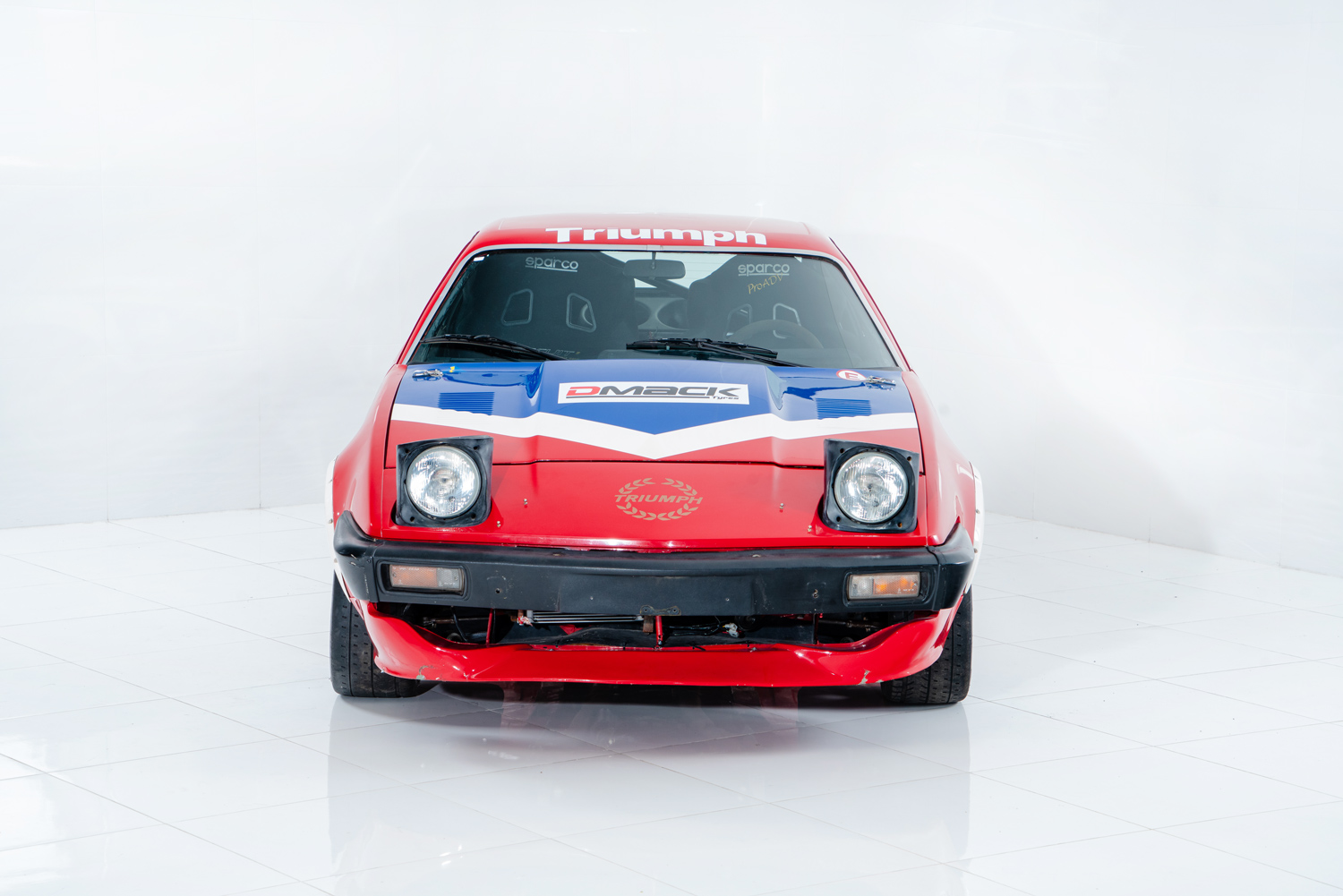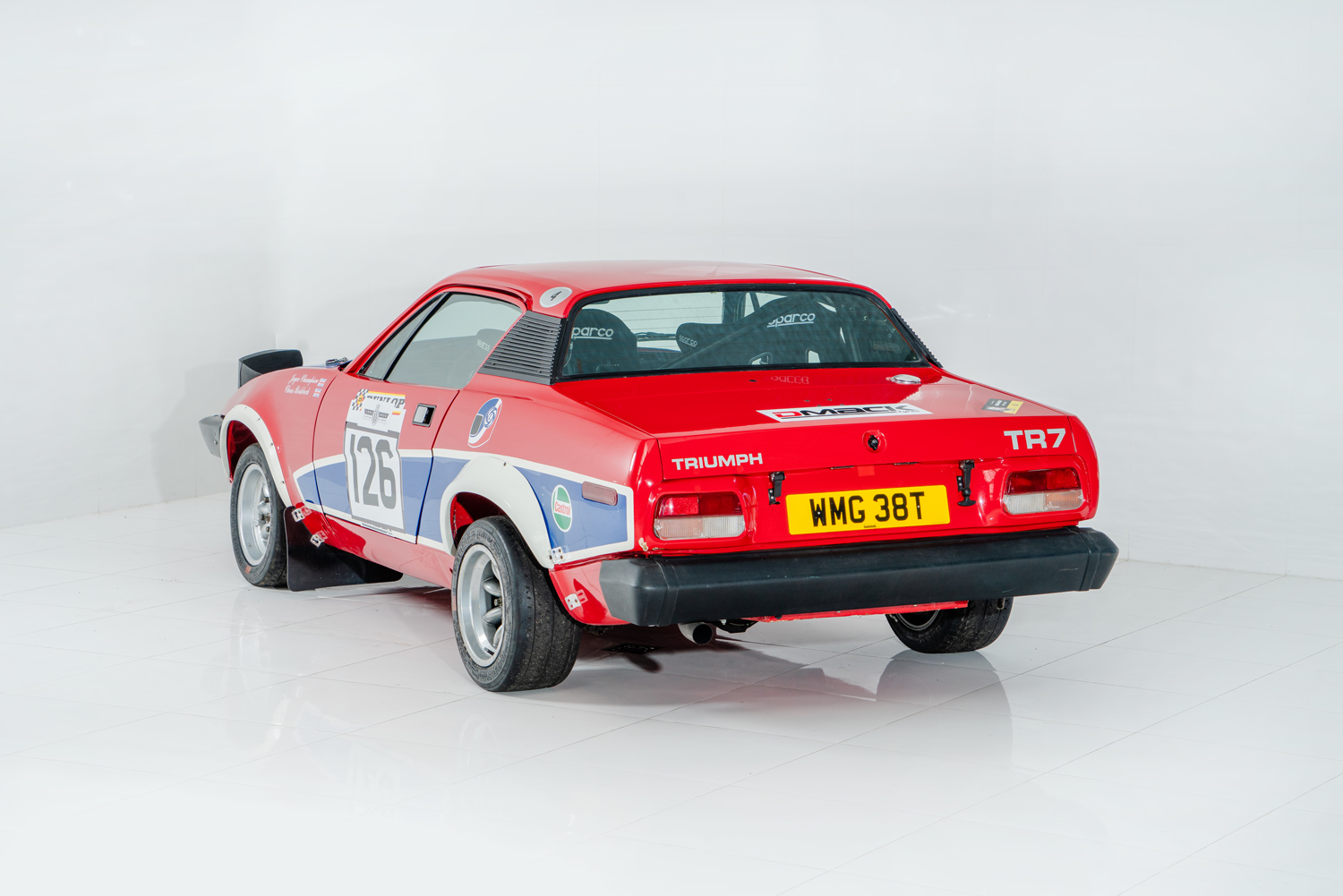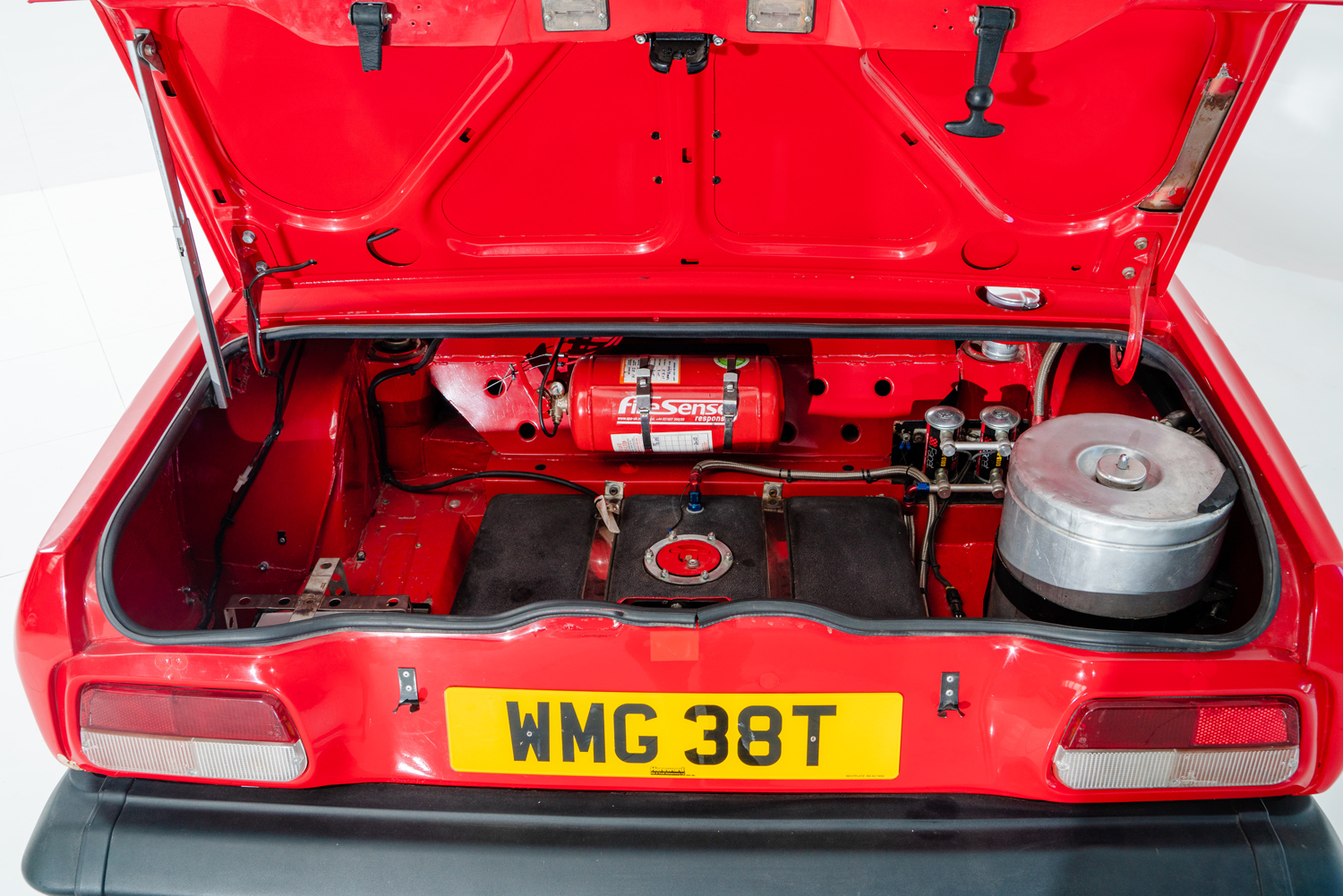MODEL HISTORY
In the 1970's, British Leyland was looking for a possible successor to the successful rally Mini in its group. In the end, the Triumph's TR7 with a four-cylinder, 16-valve 2L engine was chosen - a choice, that turned out to be not entirely thought out, and it soon became clear, that the engine would need considerable power. The TR7 model was offered on the American market under the name TR8 with a 3.5L V8 petrol from the Range Rover, which was eventually also put under the hood of the TR7 factory rally car in a modified version providing 300 hp. Because the TR8 was not offered on the European market, the model was officially homologated under the name TR7 V8.
The resulting car with a characteristic sound was very popular among spectators and was also quite successful on the race tracks, especially on tarmac. Tony Pond, Simo Lampinen and Per Eklund took turns behind the wheel of factory cars. Tony Pond in particular is more than attached to the car as he driven it from 1976 to 1981, when he then switched to the DTV Chevrolet HSR (he has also been driving Talbot Sunbeam in 1979). During this era, he managed to capture several victories on British and Belgian soil - especially 2x Manx and 2x Ypres 24h in the European Championships - but also often parked his car in the ditch.
Thanks to the heavy engine, driving the TR7 V8 was not the easiest - especially on gravel, it liked to take a direction, that was not always in accordance with the driver's instructions. At the time of operating the TR7 V8, not all competitions of today's format had a fixed schedule, but often followed the map. These competitions required rather great playfulness of the car, and there, the TR7 simply could not think of competing against others, especially the Ford Escort. The last great success was Per Eklund's 3rd place at the WRC Rally 1000 Lakes in Finland in 1980. At the end of 1980, the team was disbanded and the cars sold out.
OUR CAR
A factory-built car that was originally in an LHD configuration for one of Europe's BL factory drivers. Subsequently, the car was rebuilt into an RHD form, but the previous owner returned it to the original LHD specification.




























